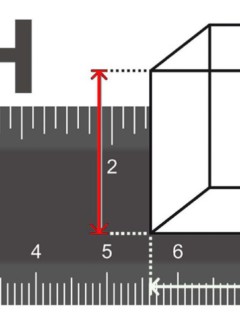“It’s all a question of organisation!” – this is the answer you often get when you ask people how they manage complex and multi-layered, sometimes contradictory processes. Children and career or covering for two colleagues during the final phase of their own project – often there is still a lot of work left to do at the end of the day. It’s not a good feeling to have to wear yourself out like that. But it’s also a reason for pride and “patting yourself on the back” because things usually work out quite well with the office organisation!
Prioritisation and organisation
The two magic words for composure even during stressful phases are: Prioritisation and good organisation. In everyday office life, for example, a lot of time (and nerves) can be saved if the filing structure is right. People spend about a year of their lives searching for lost things – it is unimaginable what we could do with this time!
The right office filing system
There are various approaches to getting structure into your office documents. Once you and your colleagues have found the structure that suits you, follow it strictly – only then will it work!
The most common methods for a functioning filing system are:
- Alphabetical: Ideal if most records are sorted by client, patient or customer name.
- Subject or category: most filing systems are organised by subject or category
- Numerical/Chronological. Ideal when records consist mainly of numbered or dated material, e.g. by orders or invoices.
1. sorting, sorting, sorting
All documents are now sorted by category. Avoid stacks that are too high and instead prefer to form further subcategories. However, if a stack consists of only a few sheets, reconsider the category name. Perhaps combine several small piles and find a new category name? The best way to “bundle” multi-page documents is with the help of a Staplers (there are classic staples, but also stapleless or electric). Alternatives are the paper clip or the staple strip.
2. the filing system
For filing, the so-called Document folders or collection folders are ideal. Make sure they are clearly labelled and visible. Now you don’t have loose documents “moving around” on your desk – perfect for a functioning office organisation. The letter trays, letter baskets or drawer boxes on the desk are only for temporary storage and only house the documents that need to be dealt with immediately (incoming mail, open invoices, current projects…). Everything else is sorted into the filing system at the end of the working day. This requires discipline and is made a little easier with the low Filing baskets of around 7 cm in height – as these force sorting at an earlier stage by sheer overflow.
3. archiving
At regular intervals, you now go through your document folders: Which projects are finished? Which documents from ongoing projects are no longer needed in the current process? These documents are then Archived – the document folders in suitable archive boxes, file folders practically in a multi-function box that can be seen from the front (makes it easier to find individual folders again – provided they have been properly labelled!) Practical for archiving suspension file folders: The special universal containers in which hanging files can be easily archived.
Is organisation in the office really everything?
At the end of the day, even with the best organisation, it is not uncommon for tasks to be left undone. Tell yourself that you fought a good fight. Pat yourself on the back and restructure the tasks for the coming day, taking into account the work that has been left undone. What has priority? Or, as our French colleagues say: Une chose apres l’autre – one thing after another!
But if the feeling of not having done it (again) is getting to you over a longer period of time, it’s time to change something fundamental. Talk to your colleagues and your boss about your workload. Who can take over tasks? How can workload be restructured? Saying “no” once in a while is also part of good organisation!















